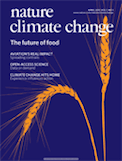
Abstract: The Emissions Gap Report 2013 from the United Nations Environment Programme restates the claim that changing to no-till practices in agriculture, as an alternative to conventional tillage, causes an accumulation of organic carbon in soil, thus mitigating climate change through carbon sequestration. But these claims ignore a large body of experimental evidence showing that the quantity of additional organic carbon in soil under no-till is relatively small: in large part apparent increases result from an altered depth distribution. The larger concentration near the surface in no-till is generally beneficial for soil properties that often, though not always, translate into improved crop growth. In many regions where no-till is practised it is common for soil to be cultivated conventionally every few years for a range of agronomic reasons, so any soil carbon benefit is then lost. We argue that no-till is beneficial for soil quality and adaptation of agriculture to climate change, but its role in mitigation is widely overstated.








